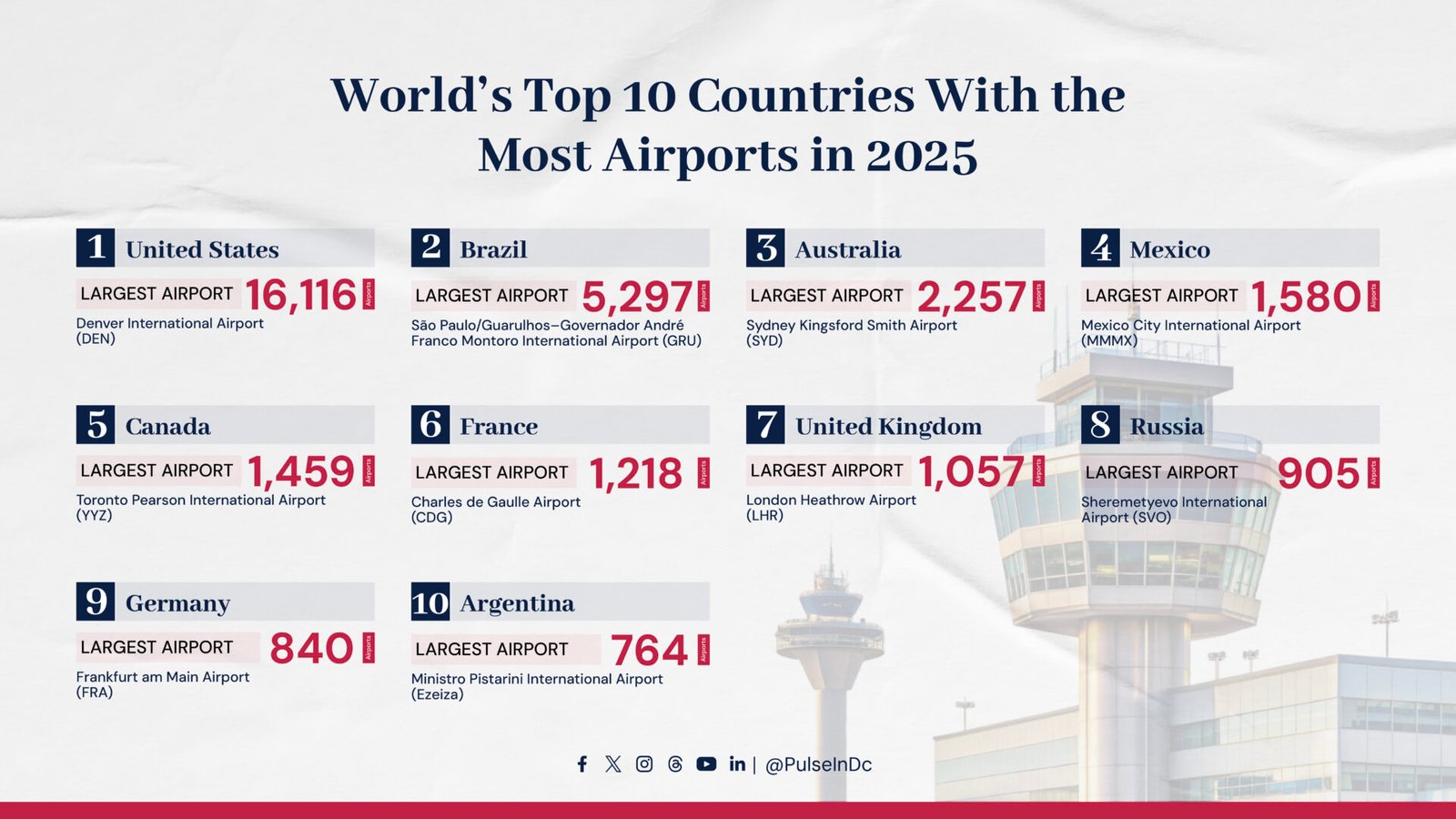
World’s Top 10 Countries With the Most Airports in 2025
In 2025, the United States dominates globally with over 16,000 airports, reflecting its vast geography, population, and reliance on air travel for both domestic and international connections.
Brazil ranks second with 5,297 airports, supporting regional connectivity across its enormous territory, followed by Australia with 2,257 airports linking urban centers and remote areas.
Mexico, Canada, France, the United Kingdom, Russia, Germany, and Argentina complete the top 10, each maintaining a network of airports crucial for passenger travel, cargo, and economic activity.
Each country’s largest airport acts as a major international hub: Denver International in the U.S., São Paulo-Guarulhos in Brazil, Sydney Kingsford Smith in Australia, Mexico City International in Mexico, Toronto Pearson in Canada, Charles de Gaulle in France, London Heathrow in the UK, Sheremetyevo in Russia, Frankfurt in Germany, and Ministro Pistarini in Argentina.
These airports handle millions of passengers annually and serve as gateways for global travel, trade, and tourism.
The distribution of airports also reflects geography, population density, and economic development, with sprawling countries like the U.S., Brazil, and Australia requiring extensive networks to connect distant regions, while Europe’s top countries focus on international traffic and economic hubs.

